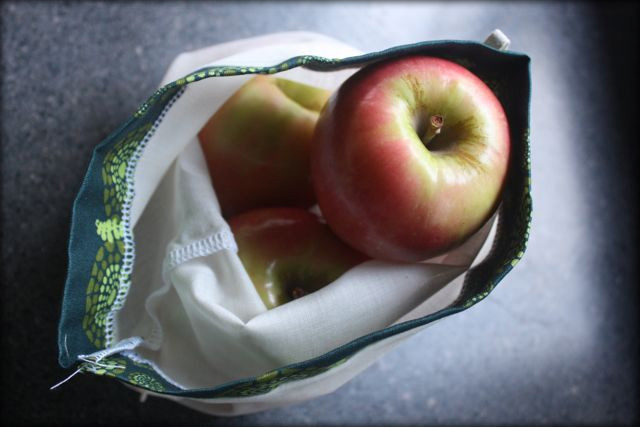Eat food.
Not too much.
Mostly plants.-Michael Pollan,
In Defense of Food: An Eater’s Manifesto
So, when I’m not writing here or at Family Fun Delaware or the occasional freelance gig, I’m very very busy community managing over at FitFluential. One of my duties there is editing and posting to the website’s blog.
I recently wrote up a recap of one of our #livewellnow Twitter chats about superfoods, and thought my readers here might appreciate that info too.
Now, clearly I’m going to argue in favor of organic and local sources for these superfoods, but the bottom line is this: superfoods are whole foods that are nutritional powerhouses. If you can’t afford organic or find local? Then go right ahead and buy conventional. They will still do your body good.
Maximize Your Diet with Superfoods: #livewellNOW
We recently co-hosted a Twitter chat with @CoachsOats about superfoods: foods that are nutrient-dense or offer extra health benefits. Generally low in calories, these foods pack a supersized wellness wallop into every bite.
With only an hour to dedicate to the topic, we restricted ourselves to foods that are mostly familiar, readily available wherever you live, not prohibitively expensive, and not so exotic as to be totally refused by the picky eater in your family. But, if your tastebuds are ready to take it to the next level, you might want to check out foods like açaí, Goji berries, Noni fruit, marine phytoplankton and cacao!
Supercharge your diet with these superfoods!
Apples
There are tons of varieties of apples (over 7500 worldwide!) spanning from sweet to tart, to suit every taste. They’re available year-round and a really inexpensive healthy snack while in season. Apples are full of antioxidants and cholesterol-fighting fiber, and eating one takes care of 25% of your daily dose of vitamin C.
Avocados
Avocados are full of fiber and good stuff like folate, potassium, vitamin E, and magnesium. They also contain a healthy dose of monounsaturated fat, which decreases total and LDL cholesterol and improves the “good” HDL cholesterol.
Blueberries
One serving of blueberries contains as many antioxidants as five servings of other fruits. They contain polyphenols to fight free radicals, reputedly guarding against wrinkles and other signs of aging. Blueberries are also anti-inflammatory, which can help safeguard against a host of diseases.
Buckwheat
Although not actually a grain, buckwheat can be used like one, and is better for you than rice, wheat or corn. Gluten-free, buckwheat contains protein and amino acids that boost the protein content of beans and cereals. It’s a good source of fiber and vitamin B6.
Chia
This one may be new to some, but if you follow the #FitFluential hashtag on Twitter you know we’re all about the chia. These seeds do more than create amusing plant sculptures for your kitchen window! Chia seeds are a complete protein, full of fiber and antioxidants, and a good source of omega 3s; they also contain healthy levels of B vitamins, iron, calcium, zinc and anti-inflammatory flavonoids. Mixed with a liquid, chia expands into a gel. You can cook with this gel like you would an egg, mix it into drinks, make it into pudding, etc. Or, even easier, you can sprinkle chia seeds onto your food– they have virtually no taste and add a bit of crunch. Find out more about chia here.
Eggs
Eggs are little powerhouses; one of the most nutrient-dense foods out there. Low in calories, they are high in protein, antioxidants, vitamins A, B2, B5 and B12, choline, and vitamin D (filling your daily requirement of vitamin D with just one egg). Eggs contain the most essential amino acids of all the protein foods. Make sure to eat the yolk! That’s where most of the nutrition is. Katie guest-posted some great egg recipes earlier this month.
Kale
All your dark leafy greens are nutrient-rich. One serving of kale (one cup) contains about 36 calories and meets your daily requirement of Vitamin A by 354% and 1328% (!) of your Vitamin K. Kale is rich in B vitamins, vitamin C, calcium, iron, and beta carotene; is anti-inflammatory, and full of fiber. Twitter chat participants overwhelmingly voted for preparing kale by sautéing with olive oil and garlic, and topping with either parmesan shavings, a squeeze of lemon, or red pepper flakes.
Oats
Probably best known for lowering cholesterol helping to manage diabetes, oats are low-calorie, high in protein and fiber. They take a long time to digest, leaving you feeling fuller for longer. Oats contain essential fats and zinc, calcium, magnesium and iron. Check out Coach’s Oats for tons of ideas for cooking with oats.
Pomegranates
Pomegranate fruits contain healthy amounts of Vitamins A, C and E as well as folic acid and antioxidants (polyphenols, tannins and anthocyanins). Studies suggest that drinking pomegranate juice may reduce blood pressure and lower LDL (bad) cholesterol.
Quinoa
Quinoa is another complete protein, offering all the essential amino acids. Gluten-free and packed with fiber, it’s also a good source of vitamin B2, iron, phosphorus and potassium.
Lean steak & wild salmon
Whether you’re trying to lose weight or maintain it, it’s important to keep up with your protein intake. Ounce for ounce, lean beef (particularly grass-fed) and wild salmon offer the best ratio of good-for-you nutrients like protein, amino acids, iron and zinc.
The FitFluential post goes on to list 24 recipes that incorporate superfoods. Check it out but remember: probably the best way to enjoy these foods is in their natural state!
I am always looking for good healthy recipes.
If you’ve got one that involves a superfood, please link it up in the comments


Leave a Reply